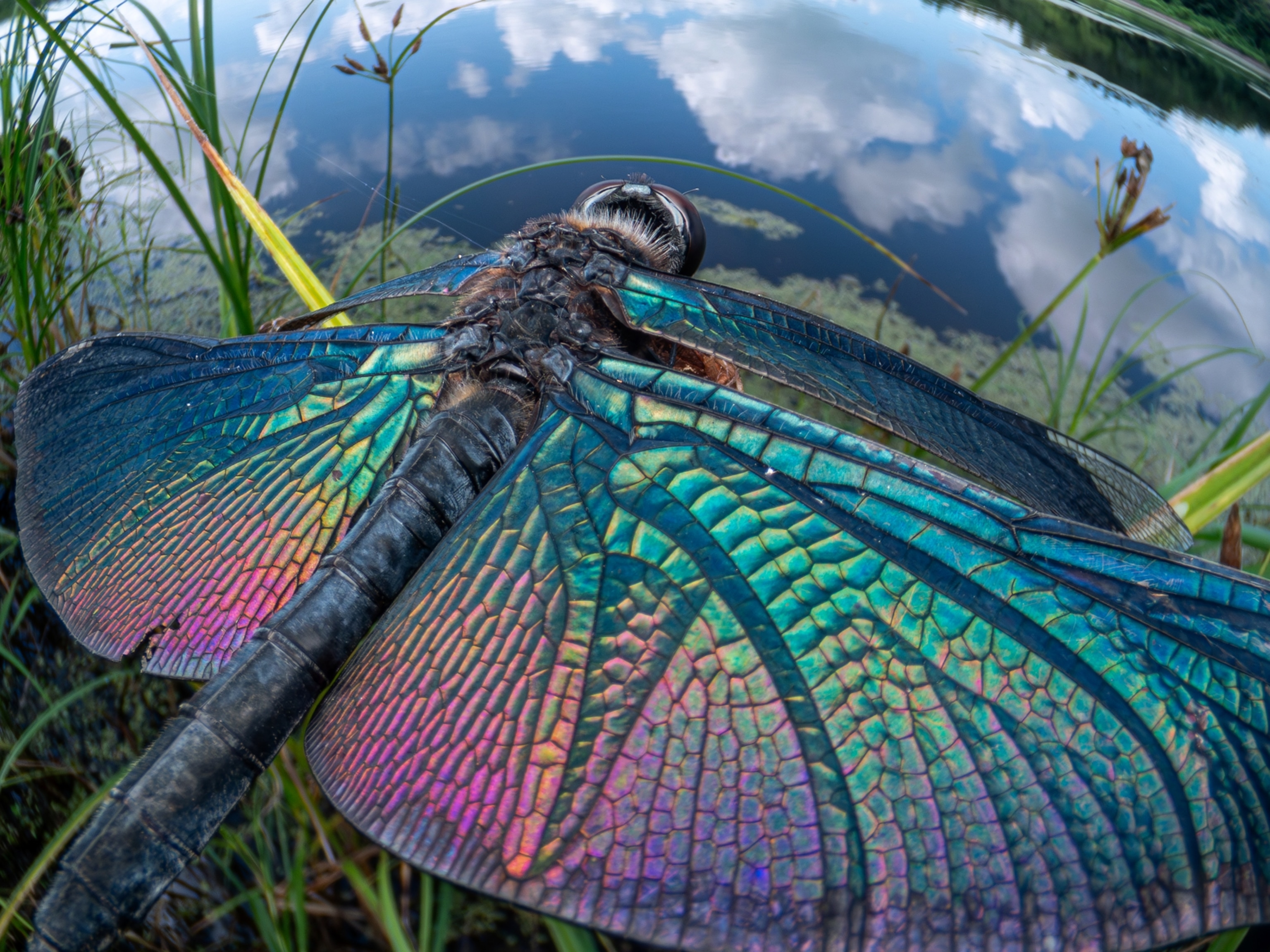These Moths Are the Size of Your Eyelash—And in Big Trouble
Hawaii's micromoths may be under threat as their food source—the islands' native plants—disappear.
There's a reason Hawaii's micromoths have long been challenging to find and study—some can be roughly the size of your eyelash.
But National Geographic explorer Chris A. Johns is up to the challenge. He's discovered, for instance, that these moths' caterpillars dine exclusively on a few Hawaiian plant species. These voracious insects burrow within leaves and "mine" their way out.
While the 40-plus known species of Philodoria micromoths native to Hawaii are closely related, the plants they eat—many of which are highly endangered—are spread across 12 very different families. (Related: "The Race to Save the World's Rarest Plants")
“It’s not typical that you find an organism where each species is so specific but all of the relatives as a whole feed on so many different plants,” says Johns, a biology Ph.D. student at the University of Florida, “and we’re not entirely sure why that has happened.”
One thing is certain: Being so picky about food is risky, says Daniel Rubinoff, director of the University of Hawaii’s Insect Museum.
“In the short term, there’s this tendency for evolution to select toward specialization, even though, in the long term … [each moth species would] be much smarter if they eat 20 species or a family of plant instead," says Rubinoff, who's not directly involved in Philodoria research.
And as ongoing development, invasive species, and changing land use in Hawaii threaten native flora, many of the moths must rely on a dwindling food source—one species, for instance, has fewer than 50 plants left in the wild.
While there's not enough data to officially label the moths as endangered, Johns and his team treat them that way.
"Some of the adults we're starting to find, we release back into the wild after capturing and taking a look," says Johns. "We're starting to feel many of these moths are extremely rare and very vulnerable."
Rediscovering Lost Plants
Since Johns started his fieldwork in 2013, he's spotted the caterpillars on all of the main islands—but he has spotted only 30 adult moths in the wild. Johns and his team rediscovered two micromoth species that hadn't been seen for more than a century.
“Once one takes flight in the field, it’s gone forever”—at least to human eyes, says Johns. “Even if you’re a foot away, it immediately gets lost in the rest of the visual noise that’s around us in the forest.” (See "15 Pictures of Adaptable, Beautiful, and Misunderstood Moths.")
Hawaii's vanishing plants—90 percent of which are found nowhere else on Earth—can be just as tough to locate. That's why Johns and his team enlist expert botanists and conservationists to search for isolated and rare communities of native plants—which has revealed some welcome surprises.
At the Waiehu cliffs, below a 4,600-foot towering rock precipice on the eastern coast of Molokai (map), Johns's team scoured a population of island aster plants—unknown to science until 2001—and found evidence of what could be leaf-mining activity. (Read about Johns's micromoth expedition to Hawaii Volancoes National Park.)
And in western Maui, another rare aster plant population, shielded from development and grazing ungulates, supports an equally rare micromoth. “It’s found nowhere else, and the plant is critically endangered,” he says.
Finding New Micromoths
Such expeditions have revealed more than a dozen new micromoth species in the last three years—and there are likely more out there, Johns says. (Read about Hawaiian bees that were recently deemed endangered.)
But there’s much more to learn about micromoths—such as their closest living relatives, when they arrived in the islands, and how long they’ve been here. Answering such questions is vital to appreciating the role of Philodoria and conserving the tiny insects.
“We’ve lost … a lot of different moth species in Hawaii simply because the host has become scarce. The worst case is just not knowing what we’ve lost,” says Rubinoff.
“At least we have a picture of a passenger pigeon. But, there’s [easily] 500 moth species here that have gone and nobody even knows what they looked like.”
Follow Meghan Miner Murray on Twitter.





